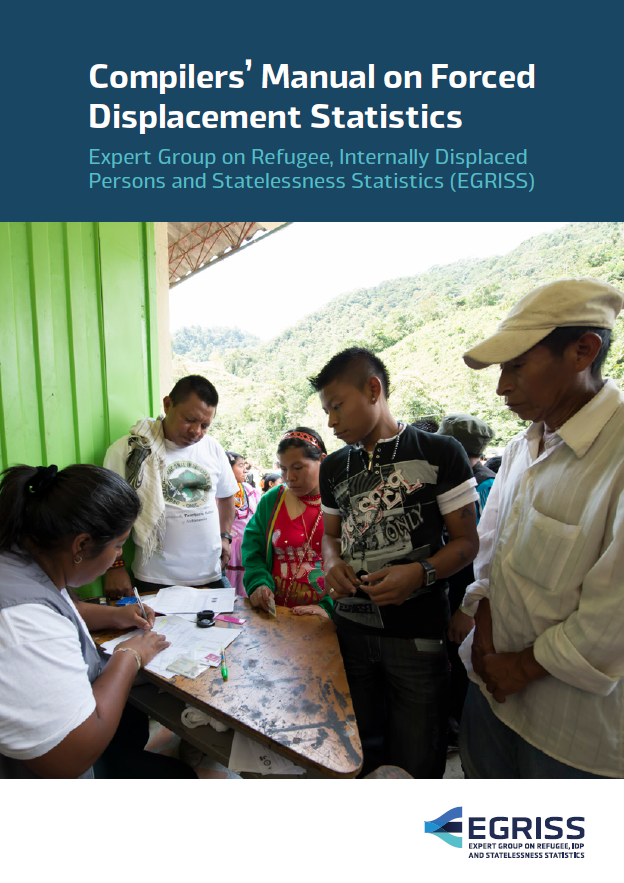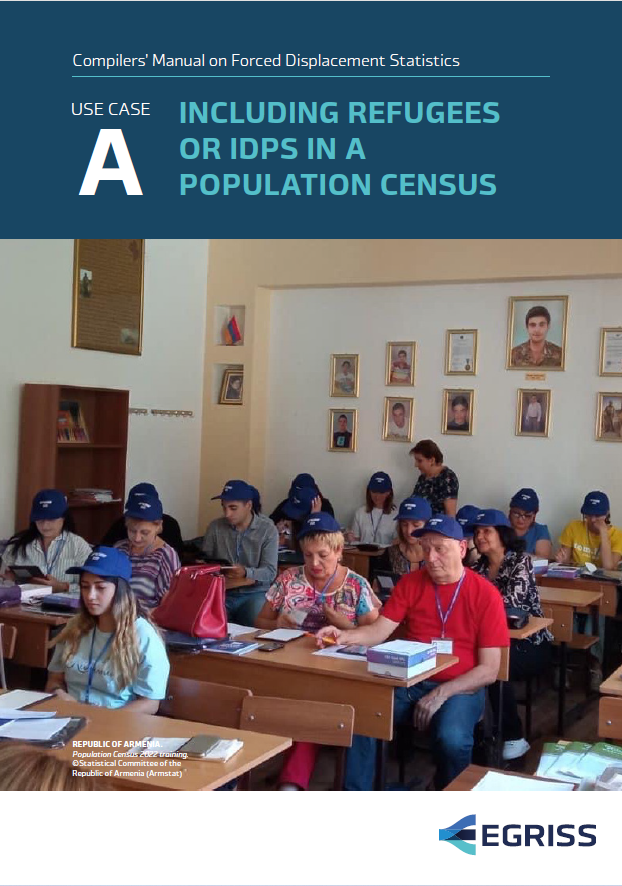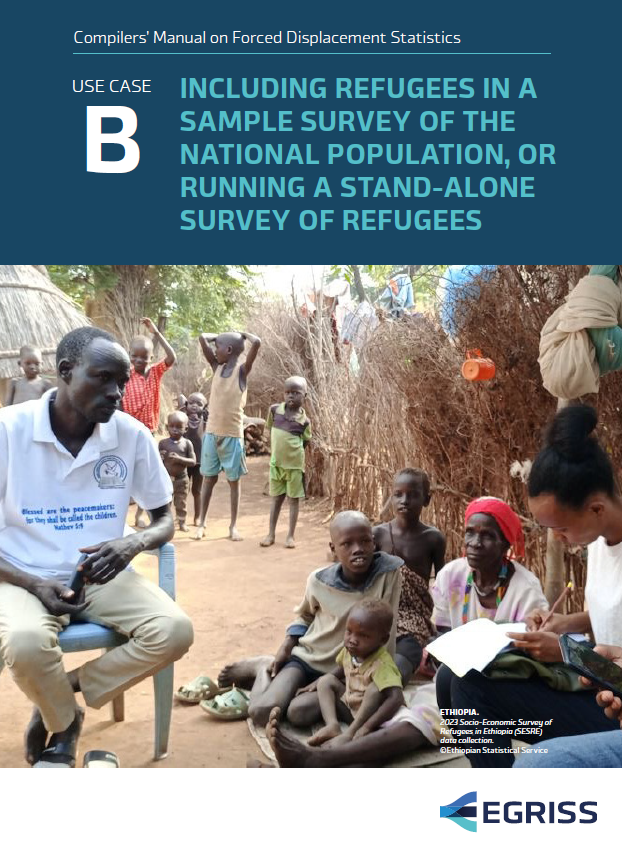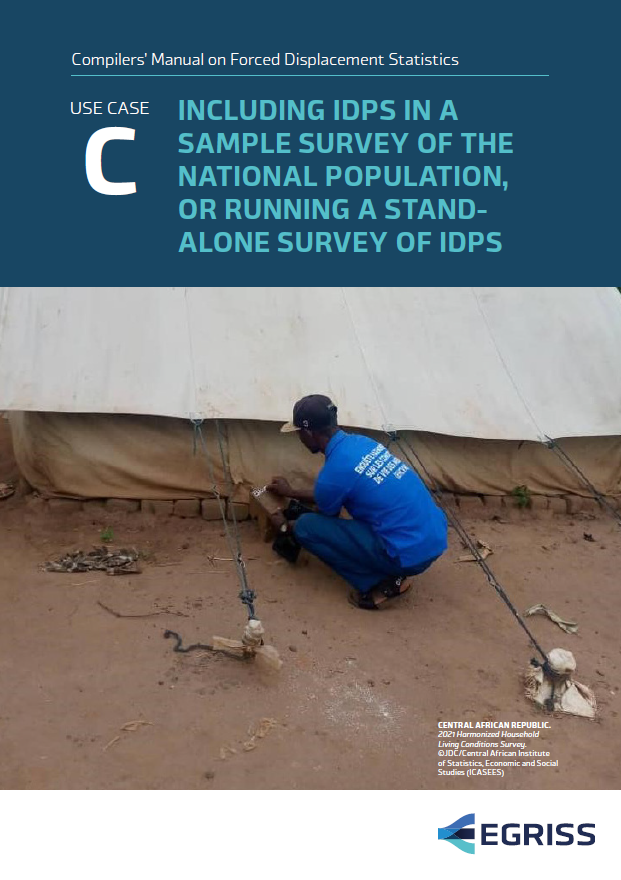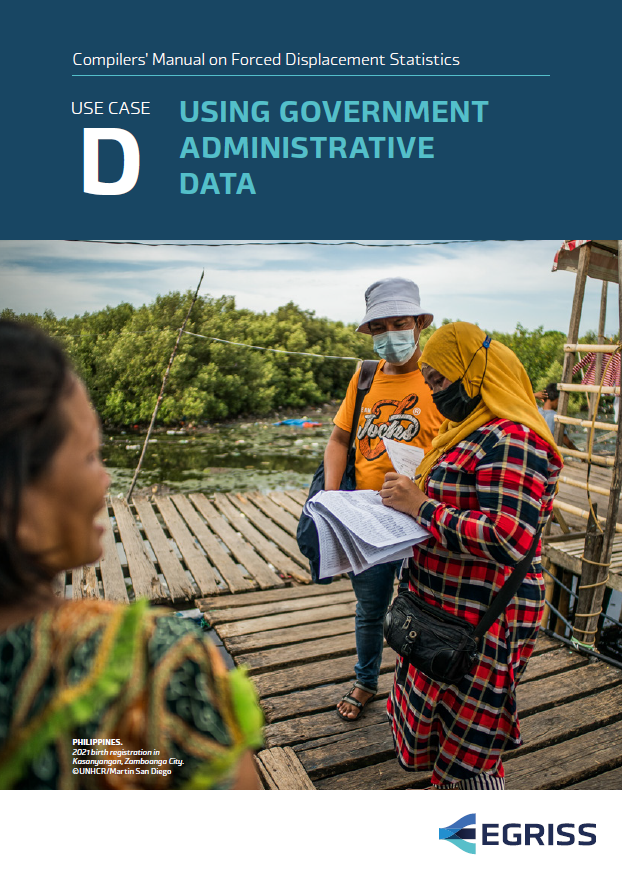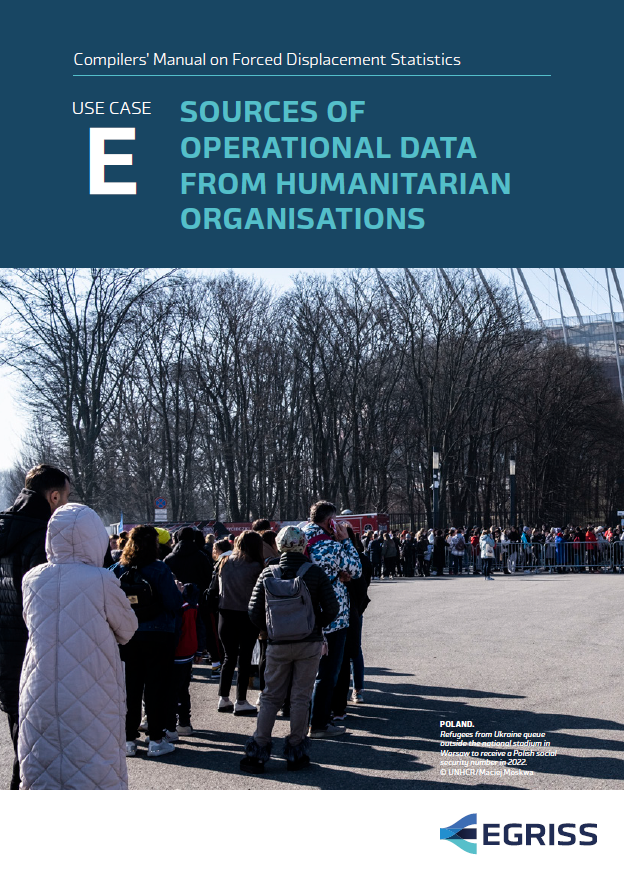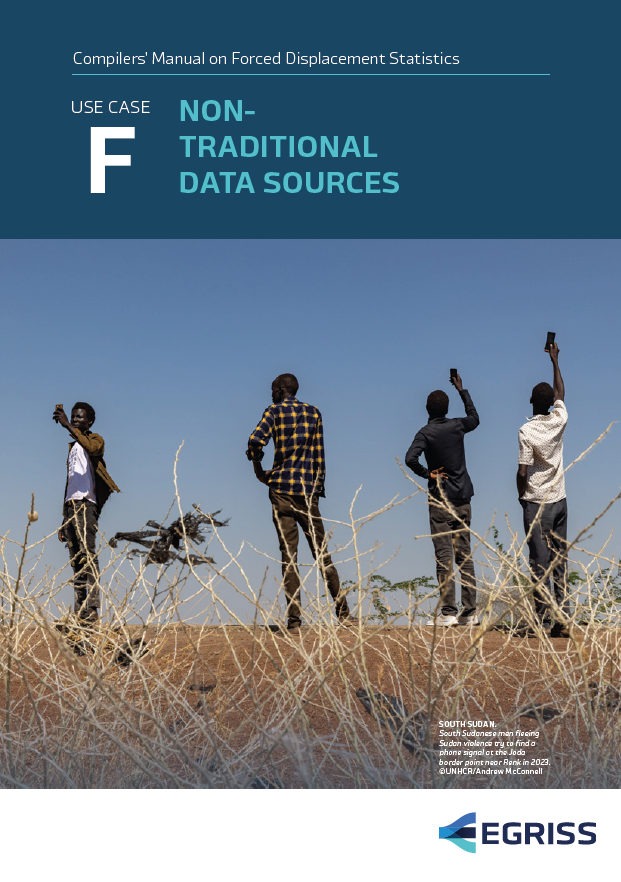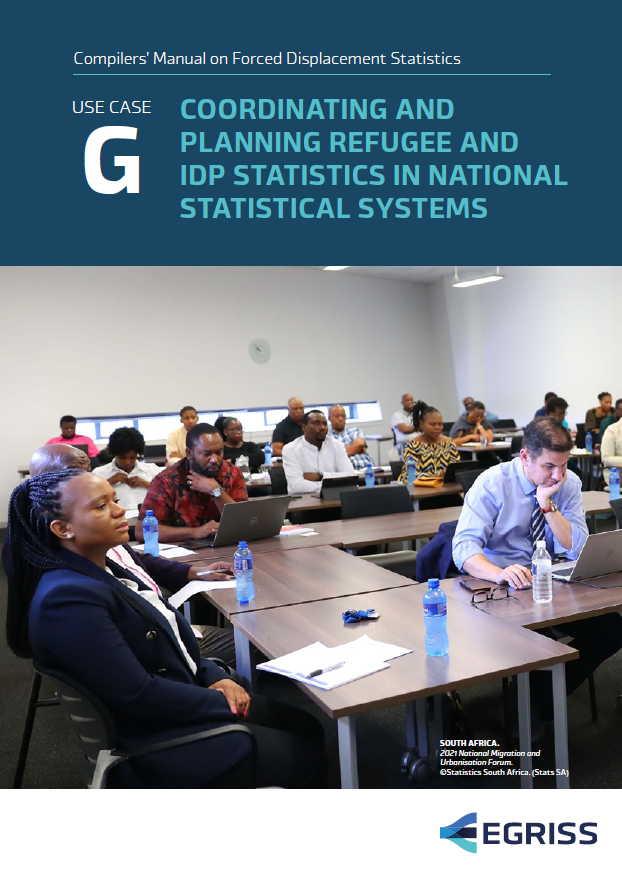Compilers’ Manual
The EGRISS Compilers’ Manual (CM) offers clear technical guidance to support countries to improve official statistics on refugees, IDPs and related populations. It complements the content of the International Recommendations on Refugee Statistics (IRRS) and the International Recommendations on Internally Displaced Persons Statistics (IRIS), providing hands on guidance for practitioners working in National Statistical Offices and other relevant institutions.
The CM is a ‘living document,’ periodically revised and enhanced as the body of expertise and knowledge develops worldwide. While a first draft of the CM was presented and formally welcomed by the UNSC (Decision 51/116) in 2020, an updated version has been published in 2023. Future updates aim to include the International Recommendations on Statelessness Statistics (IROSS) and further lessons leant.
The 2023 edition was revised by EGRISS’ Technical Subgroup on ‘Methodological Research and Guidance Development’ and is structured around a series of Use Cases which cover most scenarios in which National Statistical Offices will consult the IRRS and IRIS. Case Study examples of good practice in the production of refugee and IDP statistics, provided by EGRISS members, are interwoven throughout the manual.
You can choose to download individual Use Cases or access the entire Manual. For most people, it will be self-explanatory which Use Case to refer to and read. For statisticians who are planning to improve data on refugees or IDPs but do not have a specific data source in mind, Table G.1 (paragraph 228) may serve as a starting point.
Use Cases
A. Including refugees or IDPs in a population census
B. Including refugees in a sample survey of the national population, or running a stand-alone survey of refugees
C. Including IDPs in a sample survey of the national population, or running a stand-alone survey of IDPs
D. Using Government administrative data
E. Sources of operational data from humanitarian organisations
F. Non-traditional Data Sources
G. Coordinating and planning refugee and IDP statistics in national statistical systems

